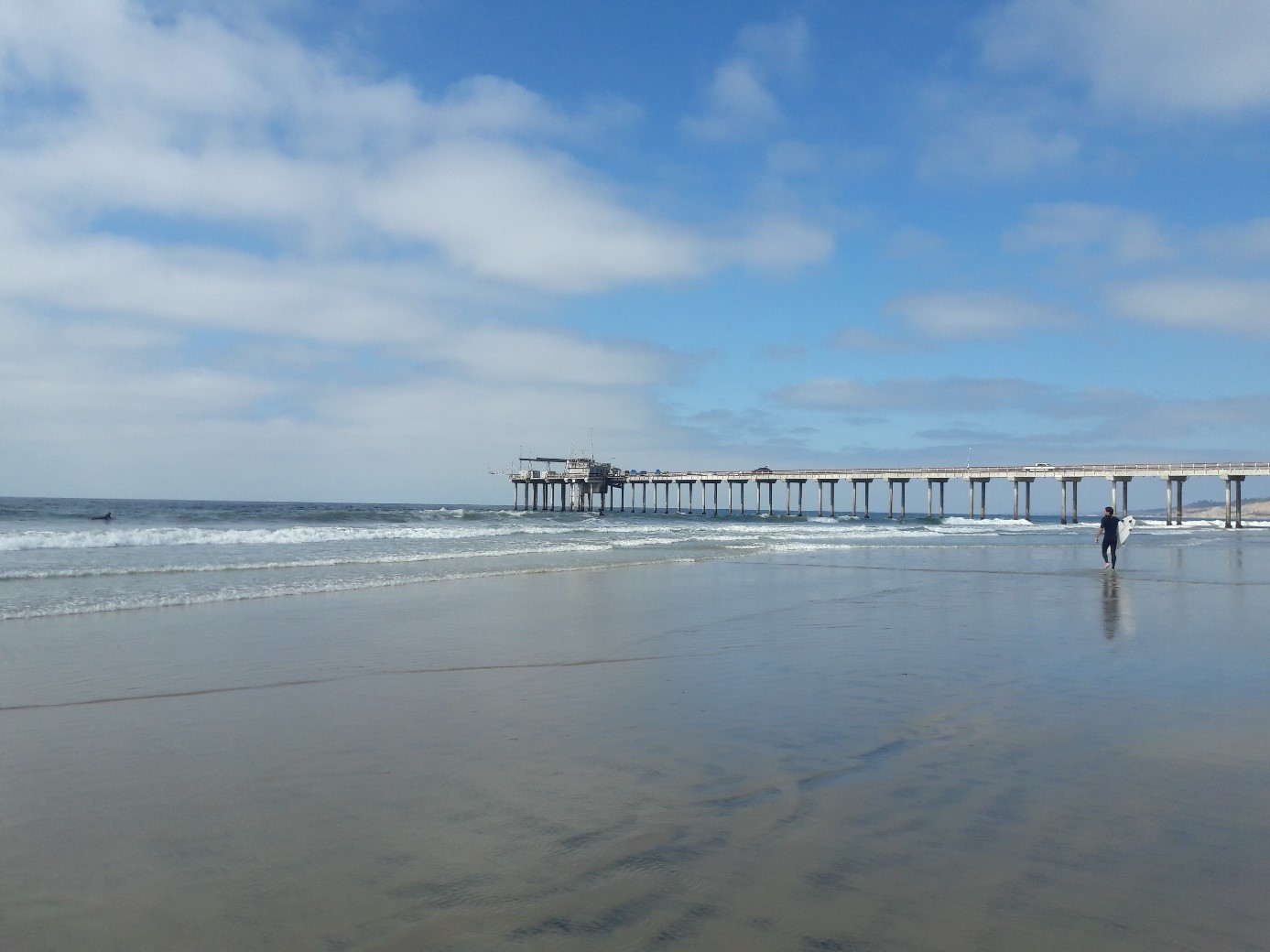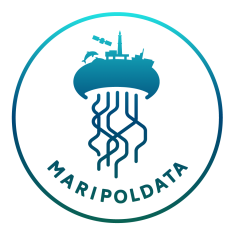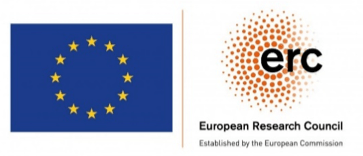Understanding Deep-Sea Life through marine scientific research: The case of Scripps Institution of Oceanography
Since 2018, the MARIPOLDATA research team has followed the BBNJ negotiations and provided extensive insights of the diplomatic practices, science-policy interactions and conflicts shaping the development of a new high seas biodiversity treaty (Tessnow-von Wysocki & Vadrot, 2020; Vadrot, 2020; Vadrot et al. 2022). In parallel, we studied the emerging scientific field of marine biodiversity to understand the state of what scientists knew and delve into the global inequalities of the scientific field, which were reappearing at the negotiation sites (Tolochko & Vadrot 2021a, 2021b). To close the gap between the scientific field and the negotiations though, MARIPOLDATA has taken a closer look at the national level to study marine biodiversity monitoring policies and practices from the perspective of deep-sea laboratories. With the aim to compare these perspectives, the laboratory life of laboratories adds a new key site to understand the structure of the politics of marine biodiversity research entangled between science and policy.
This MARIPOLDATA blog series shares insights from three laboratory ethnographies undertaken between October and December 2022 by three researchers of the ERC MARIPOLDATA team. These ethnographies will take our readers to the United States at Scripps Oceanography[1] at the University of California San Diego, France at the IFREMER[2] of Brest and Brazil at the Oceanographic Institute[3] of São Paulo. Our intention in sharing three singular experiences of laboratory ethnography is to provide a first outlook of how national knowledge infrastructures produce marine biodiversity knowledge. We begin today with Ina’s stay at Scripps.

Ellen Browning Scripps Memorial Pier at Scripps Institution of Oceanography, La Jolla (Photo credits: Ina Tessnow-von Wysocki)
Diving into Deep-Sea Research at the Lab
Whenever you are standing at the beach and your eyes scroll over the infinite horizon; whenever you are at the railing of a ship looking out to the blue waves or diving down to explore the shallow waters to the point where your snorkelling or scuba gear will no longer let you descend further… Have you ever wondered what lives thousands of meters below the surface of the ocean?
You probably know of the deep sea – you might have seen deep-sea organisms on pictures, videos, or even on your own research cruises and in the laboratory. Maybe you are involved in the United Nations negotiations on marine biodiversity governance as an observer – or even as a negotiator – to follow and take decisions over the life that exists in international waters, down to thousands of meters below the surface. Maybe you have come across pharmaceutical companies that are using deep-sea organisms for product development, and have engaged in conversations about deep-seabed mining – all of which are highly controversial discussions at the global UN level nowadays.
Yet, the deep sea is still little-understood: Humans have more knowledge of other planets, than they have about the deepest parts of this blue planet called Earth (Levin et al., 2019; Smith, 2019). But we do know that there is life in these dark and cold spaces in several thousands of meters depth!
Before I visited the Levin Lab, I had already undertaken social science research on the deep sea for almost 4 years, studied the role of deep-sea science in global negotiations of the United Nations, talked to deep-sea scientists like Sylvia Earle, engaged with colleagues on discussions on marine genetic resources and marine scientific research capacity building, yet, I had never been so close to deep-sea life until I got to meet the Levin Lab.
At Scripps Institution of Oceanography, for the first time, I saw a deep-sea organism – I looked at the little creatures that had lived thousands of meters below the surface. As my hand was shaking, I did not get a clear photo of it – don’t drop it! How many hours must have gone into collecting, identifying, preserving, researching, storing it? How much research money must have gone into the research cruise collecting it? And what would still be possible with researching it in the future? I had heard about it so many times, met many people working on it, I had spoken and written about it, had seen pictures and videos of it, followed international negotiations that set regulations about it for the future – but I had never actually seen it. This is how my laboratory ethnography in the Levin Lab started.
Why Laboratory Ethnography at Scripps Institution of Oceanography?
Since 1903, Scripps Institution of Oceanography at University of California, San Diego has contributed to investigations of the ocean and atmosphere and is considered one of the most important centers for global earth science research and education in the world[1]. While Scripps research covers climate change impacts and adaptation, resilience to hazards, conservation and biodiversity, ocean and human health, national security, and innovative technology (ibid) to observe the planet – we would like to zoom into one specific laboratory: the Levin Lab.

The Levin Lab opening their doors on a social scientists’ eyes to life in the deep sea… f.l.t.r:. Angelica Bradley, Lisa Levin, Francis Nguyen, Ina Tessnow-von Wysocki, John Howel, Olivia Pereira, Carlos Neira and Guillermo Mendoza (Photo credits: Ina Tessnow-von Wysocki)
Prof. Lisa Levin is a Distinguished Professor Emerita at the Scripps Institution of Oceanography, University of California, San Diego. She served as Director of the Center for Marine Biodiversity and Conservation and Oliver Chair at Scripps from 2011-2017. Levin’s research interests include biodiversity and climate change impacts on deep-sea continental margin, and the application of deep-sea science to policy. Her lab studies benthic ecosystems in the deep sea and shallow water and has worked with a broad range of taxa, from microbes and microalgae to invertebrates, fishes and whales. Her recent research has emphasized 3 major themes: (1) the structure, function and vulnerability of continental margin ecosystems, particularly those subject to oxygen and sulfide stress, ocean acidification and deoxygenation; (2) wetland biotic interactions; and (3) larval ecology of coastal marine populations with emphasis on connectivity[2]. Levin’s deep-sea research has been conducted on over 50 expeditions to the margins of the Pacific, Indian and Atlantic Oceans using ships, submersibles, remotely operated vehicles (ROVs) and autonomous underwater vehicles (AUVs) to observe, sample and conduct experiments. Now, after her retirement, there still remain seven lab members in the Levin Lab, working on the different projects that she oversees.
A regular day in the lab..?
There was no one day like the other in my fieldwork – and this is also true for marine research in the Levin Lab. The two weeks enabled me to shadow the scientists in their meetings, classes, observe their lab work with the samples, identification of species under the microscope, and data analysis of research cruise pictures and videos. Not only is the team diverse in their academic and cultural backgrounds, including researchers from Chile, Brazil, Mexico and the United States, but also the projects they work on within the Levin Lab include different geographical regions with study sites in Southern California, the deep Alaska continental margin and Costa Rica, with research topics ranging from studying effects of DDT waste barrels in a previous industrial dumpsite in the San Pedro basin of Los Angeles; exploration and characterization of microbial and animal biodiversity in the Southern California Borderland; over effects of phosphorite and ferro-manganese crusts on the biology; to studying methane seeps in Costa Rica and hypoxia in coastal estuaries.
The Levin Lab is working on a range of different types of data: during the cruise they collect temperature, salinity, oxygen values for the water, sometimes turbidity, light, or fluorescence. The hyrographic data are automatically sent to the national database Rolling deck to repository (R2R). Moreover, the biological data are very labor-intensive and can take months to years to generate because the scientists in the Levin Lab have to sort the invertebrates out of the samples and measure the properties of the sediments and fauna (MARIPOLDATA Interview with Lisa Levin, 2022). The Levin Lab scientists then use both the physical samples, as well as pictures and videos from the cruises to map and understand the benthic communities.
There was also time to get a sense of the work of other Scripps laboratories, such as getting to know about gene sequences at Greg Rouse’s Lab and taking a tour through the benthic invertebrate collection of amazing deep-sea creatures.
Besides getting to know the day-to-day work of Scripps scientists, I also conducted semi-structured interviews to understand how they became scientists, their motivations, what fascinates them in research, and got insights into their time on the vessel, and other moments that I could not capture in the little snapshot of two-week laboratory ethnography. What is it like to be on the submarine Alvin – what crosses a scientist’s mind when descending several thousands of metres down into the depth of the ocean? What are opportunities, challenges and fears of individual scientists when it comes to funding their research? And what do the United States provide as national infrastructures for monitoring marine biodiversity and supporting science?
Through desk research and interviews, I could identify the conditions and obligations of US scientists, as regards the national and international regulations for their research. While scientists require a research permit in foreign waters, in US waters 3 miles off shore and when conducting research in US sanctuaries, marine scientific research in international waters is currently possible without a permit as regulated under the freedom of scientific research under UNCLOS (Art. 87 (f)). As US federal funders generally require a data management plan in their grant proposals, scientists will thus commit to uploading their data to specific databases. While making data available to all is desirable, some databases fit certain types of data better than others – e.g. Genbank works well for genetic sequence data – there is currently “no nice, easy home for ecological community data” (MARIPOLDATA Interview with Lisa Levin, 2022), the type of data that the Levin Lab is collecting.
When Science meets Policy
Some things are so small, your eyes cannot see them, so far away, you might never reach them and so different you may not be able to ever relate to them. But still, they are there and they are alive, in the deepest places of our ocean. The research of the Levin Lab is significant for international policy-making on global ocean and marine biodiversity governance because it seeks to understand life on the bottom of our ocean (benthic communities) and the conditions the deep-sea animals need to strive, as well as the implications that their existence has on surrounding ecosystems.
Lisa Levin is increasingly involved with policy through her engagement in different international fora. She is co-founder and co-lead of the Deep-Ocean Stewardship Initiative (DOSI)[3], author on the Intergovernmental Panel on Climate Change (IPCC) Special Report on The Ocean and Cryosphere in a Changing Climate, active participant at the Conferences of the Parties (COPs) of the United Nations Framework Convention on Climate Change (UNFCCC), and co-lead of the Deep Ocean Observing Strategy (DOOS)[4]. Apart from being involved in the intersections between science and policy herself, she also encourages early career researchers to get involved in communicating their research to policy-makers and the public. For this reason, the Levin Lab was also engaged in the first ever Climate Ocean Pavilion at a 27th climate conference of the parties (COP27) with Scripps[5]. International policy topics that she is recently engaged in are the link between climate change and the deep sea (Bris & Levin, 2020; Levin, 2019, 2021; Levin et al., 2020) and pointing to the risks of deep-seabed mining (Levin et al., 2016).
Reflecting on the two weeks of laboratory ethnography at Scripps Institution of Oceanography at the Levin Lab, this time provided me with – not just increased knowledge about the deep ocean – but also with incredible experiences and insights into the laboratory work, the situation researchers face, their motivations and a better understanding of marine science in the United States. Throughout 2023, the MARIPOLDATA team will be able to use the data to compare it to the other cases of Brazil and the EU.
At the MARIPOLDATA Ocean Seminar Climate Change and the Deep Sea: Science-Policy perspectives, Lisa Levin gave insights into how climate change and the deep sea are interconnected and should therefore also be in global policy-making. While the science points to the importance of these links, climate change seems to still be marginalized in ocean discussions. Maybe science could be better integrated into global ocean governance through an Intergovernmental Panel for Ocean Sustainability (Gaill et al., 2022)..?
[1] https://scripps.ucsd.edu/about
[2] https://llevin.scrippsprofiles.ucsd.edu/bio/
[3] DOSI integrates science, technology, policy, law and economics to advise on ecosystem-based management of resource use in the deep ocean and strategies to maintain the integrity of deep-ocean ecosystems within and beyond national jurisdictions.
[4] a program within the Global Ocean Observing System (GOOS) which aims to coordinate deep ocean-observing to address needs of climate science and society.
[5] https://scripps.ucsd.edu/news/meet-uc-san-diego-delegates-headed-egypt-un-climate-conference
References
Bris, N. L., & Levin, L. A. (2020). 161Climate change cumulative impacts on deep-sea ecosystems. In Natural Capital and Exploitation of the Deep Ocean (pp. 0). doi:10.1093/oso/9780198841654.003.0009
Gaill, F., Brodie Rudolph, T., Lebleu, L., Allemand, D., Blasiak, R., Cheung, W. W. L., . . . Poivre d’Arvor, O. (2022). An evolution towards scientific consensus for a sustainable ocean future. npj Ocean Sustainability, 1(1), 7. doi:10.1038/s44183-022-00007-1
Levin, L. A. (2019). Oceanography (Washington, D.C.), 32, 180. doi:10.5670/oceanog.2019.224
Levin, L. A. (2021). IPCC and the Deep Sea: A Case for Deeper Knowledge. Frontiers in Climate, 3. Retrieved from https://www.frontiersin.org/articles/10.3389/fclim.2021.720755
Levin, L. A., Bett, B. J., Gates, A. R., Heimbach, P., Howe, B. M., Janssen, F., . . . Weller, R. A. (2019). Global Observing Needs in the Deep Ocean. 6(241). doi:10.3389/fmars.2019.00241
Levin, L. A., Mengerink, K., Gjerde, K. M., Rowden, A. A., Van Dover, C. L., Clark, M. R., . . . Brider, J. (2016). Defining “serious harm” to the marine environment in the context of deep-seabed mining. Marine Policy, 74, 245-259. doi:https://doi.org/10.1016/j.marpol.2016.09.032
Levin, L. A., Wei, C.-L., Dunn, D. C., Amon, D. J., Ashford, O. S., Cheung, W. W. L., . . . Yasuhara, M. (2020). Climate change considerations are fundamental to management of deep-sea resource extraction. Global Change Biology, 26(9), 4664-4678. doi:https://doi.org/10.1111/gcb.15223
Smith, N. (2019). Engineering & technology, 14, 63. doi:10.1049/et.2019.0706
Tessnow-von Wysocki, I., & Vadrot, A. B. M. (2020). The Voice of Science on Marine Biodiversity Negotiations: A Systematic Literature Review. Frontiers in Marine Science, 7. Retrieved from https://www.frontiersin.org/articles/10.3389/fmars.2020.614282
Vadrot, A. B. M. (2020). Multilateralism as a ‘site’ of struggle over environmental knowledge: the North-South divide. Critical Policy Studies, 14(2), 233-245. doi:10.1080/19460171.2020.1768131
Vadrot, A. B. M., Langlet, A., Tessnow-von Wysocki, I., Tolochko, P., Brogat, E., & Ruiz-Rodríguez, S. C. (2021). Marine Biodiversity Negotiations During COVID-19: A New Role for Digital Diplomacy? Global Environmental Politics, 1-18. doi:10.1162/glep_a_00605







